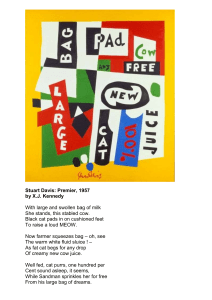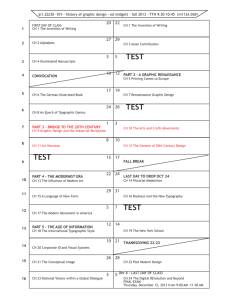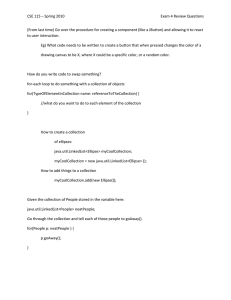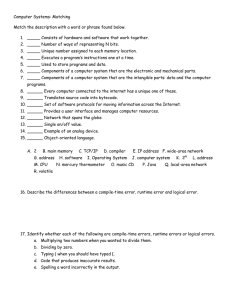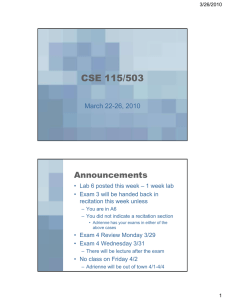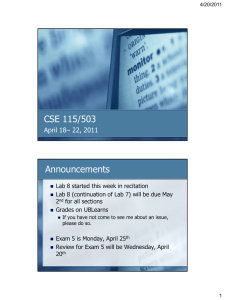CSE 115/503 Announcements March 28 – April 1, 2011
advertisement
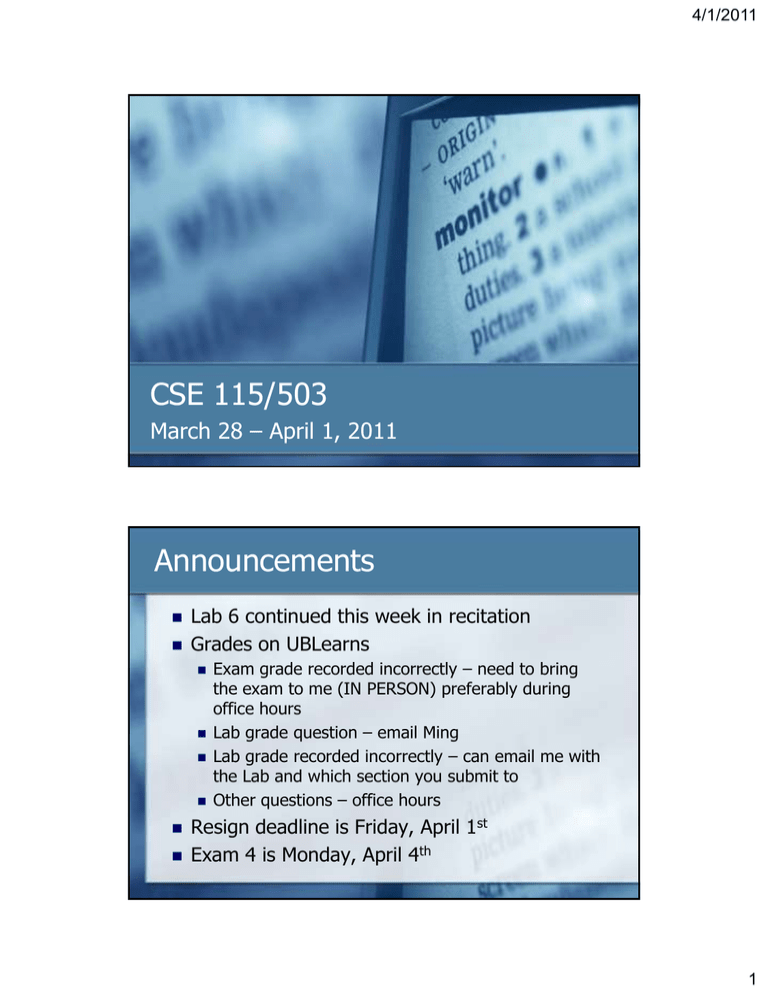
4/1/2011
CSE 115/503
March 28 – April 1, 2011
Announcements
Lab 6 continued this week in recitation
Grades on UBLearns
Exam grade recorded incorrectly – need to bring
the exam to me (IN PERSON) preferably during
office hours
Lab grade question – email Ming
Lab grade recorded incorrectly – can email me with
the Lab and which section you submit to
Other questions – office hours
Resign deadline is Friday, April 1st
Exam 4 is Monday, April 4th
1
4/1/2011
Getting all the shapes
Look at DrawingCanvas class documentation
getAllGraphics method
Returns
Collection<IGraphic>
Question 2: What do you think a Collection is?
2
4/1/2011
Collection
In the context of this method:
Collection is a java.util.Collection,
an interface in the java.util package.
However, in general, the idea of a collection
is a bigger concept. A collection is a group
of things.
Why do we need them?
Variables
Have a value
One value
What if we want to keep track of multiple
things?
3
4/1/2011
Another Question
Collection<IGraphic>
So what is this part?
It’s a type
It’s the type of thing inside the collection.
Formally, <IGraphic> is called a generic.
Ironically, generics specify the type of
“thing” a collection holds.
It also provides compile-time checking of
the contents of the collection.
4
4/1/2011
Example
Collection<Cat> bagOfCats =
something.getAllCats();
bagOfCats.add(new Cat());
bagOfCats.add(new TabbyCat());
bagOfCats.add(new StrayCat());
bagOfCats.add(new Dog());
The compiler would not allow this at
compile time.
Our example
Question 3
Write the code to create the local variable
an assign the collection to it.
5
4/1/2011
What’s next
We need to go through the “bag” and tell
each graphic to move up.
How do we do that?
Get a graphic out of the bag
Move the graphic up
Repeat steps 1 & 2 until we moved all the
graphics up on the screen.
6
4/1/2011
for-each loop
for(TypeOfElementInCollection identifier: referenceToCollection)
{
//
//
code that indicates what to do for each element in the
collection
}
Note that in the first part of this, we are actually declaring a variable. We
will use the variable in the body of the loop to “do something” with each of
the elements that are stored in the collection.
The reference to the collection is typically the name of the variable that
refers to the collection.
for(Cat c: bagOfCats) {
c.pullTail();
}
7
